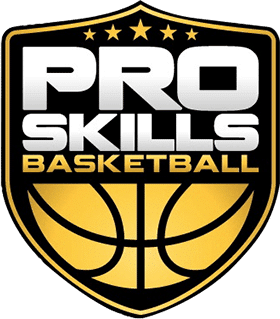
5 Truths About Division 2 College Basketball Every Player & Parent Should Know
There are far too many misconceptions about college basketball—especially when it comes to NCAA Division 2 programs. Players and parents often overlook or underestimate D2 schools, thinking anything below Division 1 isn’t worth their time.
But that kind of thinking can lead to missed opportunities, poor decision-making, and false expectations.
At Pro Skills Basketball, we’ve seen firsthand the value of all levels of college basketball. In fact, my PSB co-founder Logan Kosmalski wrote a powerful post, “The Truth About D3 Basketball”, that helped open a lot of eyes. Now, it’s time we do the same for Division 2.
Here are 5 facts about D2 college basketball that every serious high school player and parent should understand before choosing a college or university.
1. Division 2 Basketball = High-Level Basketball
The quality of play in Division 2 is extremely high. While Division 1 may get the most media attention, many D2 programs are every bit as competitive—and sometimes even better.
Each year, D2 schools beat D1 teams in preseason exhibition games. Queens University in Charlotte, NC, is a great example. They’ve consistently competed with—and even beaten—D1 programs like Howard, and narrowly lost to George Mason by just one point.
D2 scoring averages are also surprisingly high. For example, in a recent season, Gonzaga led Division 1 with 87.4 points per game. But guess what? Twelve different Division 2 teams averaged more than that.
On top of that, many D2 programs boast impressive facilities, updated weight rooms, and excellent coaching staffs. Don’t make the mistake of assuming D2 means second-rate.
2. Yes, Scholarships Are Available in D2 Basketball
One of the biggest myths we hear is that Division 2 doesn’t offer scholarships. That’s just not true.
While D2 schools have fewer athletic scholarships than D1 (10 full scholarships per team vs. 13), they still provide significant financial aid opportunities.
Plus, most D2 schools offer a combination of academic and athletic scholarships. Players with strong academics may even attend a D2 school tuition-free without relying solely on basketball funding.
3. Not Everyone Can Play D2 Basketball
Many players believe that if they don’t go D1, they can “just play D2.” But that’s not how it works.
D2 basketball is still extremely competitive. Out of more than 1 million high school boys and girls who play basketball, only about 1% go on to play at the Division 1 level. The talent that doesn’t go D1 doesn’t disappear—it filters into D2 and D3 programs, making them highly competitive.
If you’re serious about playing at the next level, go watch a top D2 team in person. Schools like Lincoln Memorial, Augusta University, Queens, and USC-Aiken have rosters full of athletic, skilled players. Ask yourself honestly—can you compete at that level?
4. You Can Still Go Pro from Division 2
Another common misconception: you can’t go pro if you play at a D2 school. Again, not true.
Players like Scottie Pippen, Dennis Rodman, and Ben Wallace all played at small colleges (D2 or lower) before making it to the NBA.
Even if the NBA isn’t the end goal, Division 2 players regularly go on to play professionally overseas, in the G-League, or in other pro circuits.
One of my favorite teammates overseas was a D2 point guard (shoutout to Zach!). He had a long, successful career overseas because he was used to carrying the scoring load and making big plays—just like in college.
Sometimes, D2 is the better path to development and exposure. It may offer more playing time, more touches, and more opportunities to shine than sitting on the bench at a high-major D1 school.
5. Hundreds of D1 Players Transfer to D2 Every Year
Each year, 700–800 Division 1 players enter the transfer portal. Many of them end up at D2 schools.
Why? Because D1 rosters may have 13 scholarship players, but only 7–9 get consistent minutes. That leaves a lot of talented players stuck on the bench.
Some realize that transferring to another D1 program doesn’t solve their problems, and instead choose to transfer to a D2 program where they can play immediately and contribute in a meaningful way.
This consistent influx of D1 talent into Division 2 makes the level of play even stronger—and further proves that D2 is not a fallback, it’s a real option.
Final Thoughts: D2 Deserves Respect
Players and parents need to do more research. Attend D2 games. Talk to coaches. Understand the landscape.
D2 is not a consolation prize—it’s a serious, competitive, and rewarding level of college basketball that can lead to great things both on and off the court.
Don’t write it off just because it’s not D1. And if you’re good enough to get a D2 opportunity, take it seriously.
If you’re lucky enough to play at any level of college basketball—D1, D2, or D3—be grateful. It’s a massive achievement that only a small percentage of players ever reach.
📣 Ready to take the next step in your child’s basketball journey?
Pro Skills Basketball offers Club Teams, Camps, Clinics, and Academies in 25+ cities across the U.S.
👉 Find your city and sign up today to join a program focused on real development, experienced coaches, and a culture that puts players first.
📩 Contact us at admin@proskillsbasketball.com
📞 Call us at 866-996-3888




 »
»